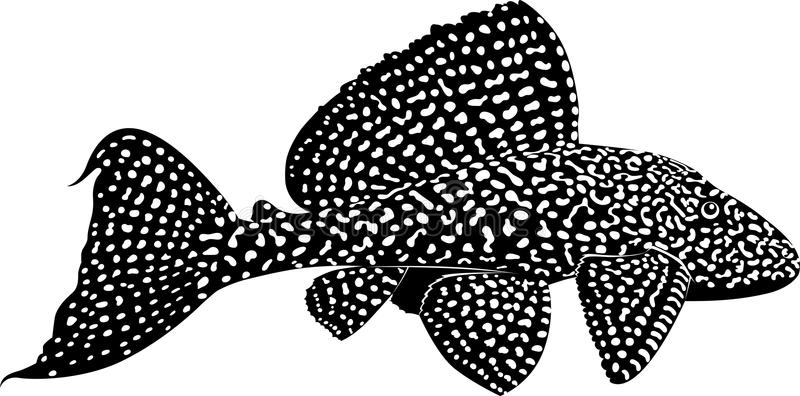
Plecostomus Fish Guide: Care, Breeding, Food, Tank Mates & Behavior
Plecostomus, or “plecos” are usually called as armored sucker mouths. These belong to the Family Loricariidae, which is the largest family of catfish in the world. They have a characteristic armored plagued body and a sucker shaped mouth. These are nocturnal fishes and usually, do bot show much activity during the day. Many plecostomus can breathe air as they come up to the surface of the water as there occur modifications in their digestive tract.
Also, Check Out Betta Fish Care Guide
Contents
Plecostomus Natural Habitat and Native Place
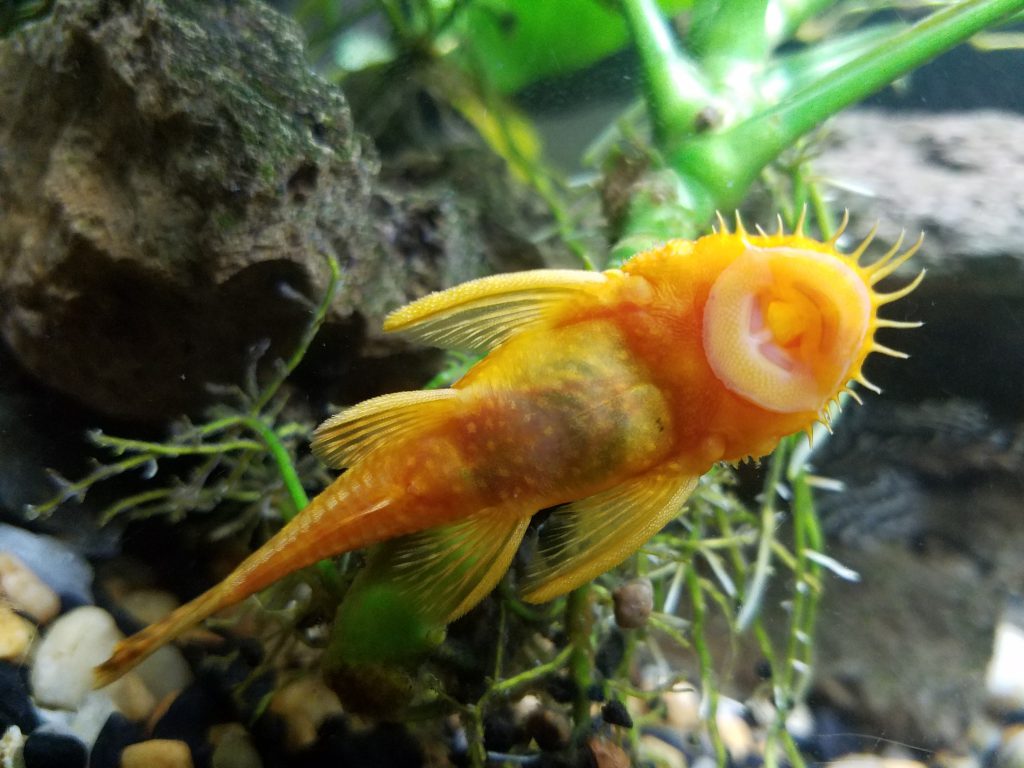
Most Plecostomus species are native to South America and are also found in Panama and Costa Rica. They occupy a wide range of habitats, including certain parts of rivers. They are most likely to be found in shallow waters of streams and rivers, while others usually favor black water or brackish estuaries. These fishes use their sucker mouth to attach to underlying objects in the fast streams which keeps them from getting washed away.
Appearance of Plecostomus
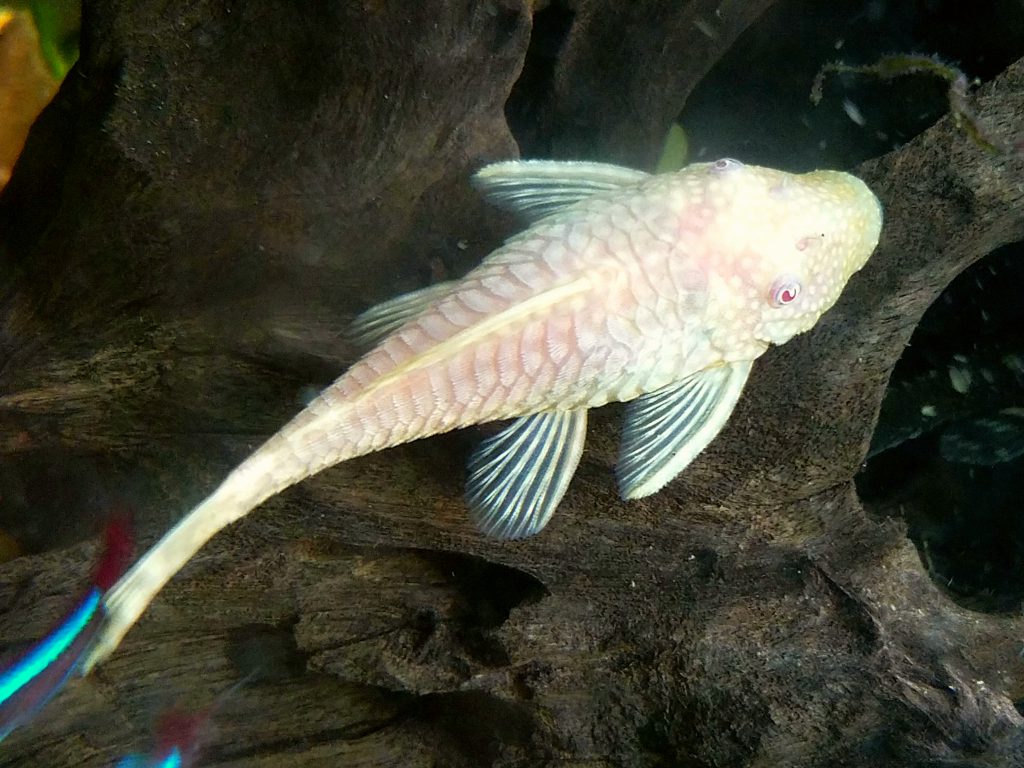
Most of these Plecostomus fishes are brown in color, but the color may vary in accordance with the environmental conditions the fishes are kept or breed in. Spots or certain patterns may be present on some of the fishes.
Plecostomus have bony plates all over their body except the abdomen
They have unique sucker like mouth which is helpful in cleaning algae.
In wild conditions, Plecostomus usually grow up to 25 inches, but when bred in tanks, usually they grow only up to 12 to 15 inches.
The characteristic feature of this family is the rows of bony specs on an elongated body. The bony plates are not usually present on the abdominal region. They have well developed dorsal, pectoral and tail fins. These fins may be coarse or soft depending upon the position of the fins.
Plecostomus are usually gray in color but may also be found in shades of brown. They have a large head with small eyes on top of the crown. They have characteristic mucous membranes over the eyes which allows them to control the intensity of light that enters their eyes. This may be attributed to their nocturnal habits.
Not all of the members of these species are fit for aquariums. Some of the species that can be breed in tanks or aquariums are-
- Bristlenose Fish
- Gold Nugget Fish
- Zebra Fish
- Clown Fish
- Sailfin Fish
- Snowball Fish
- Royal Fish
Typical Behavior of Plecostomus
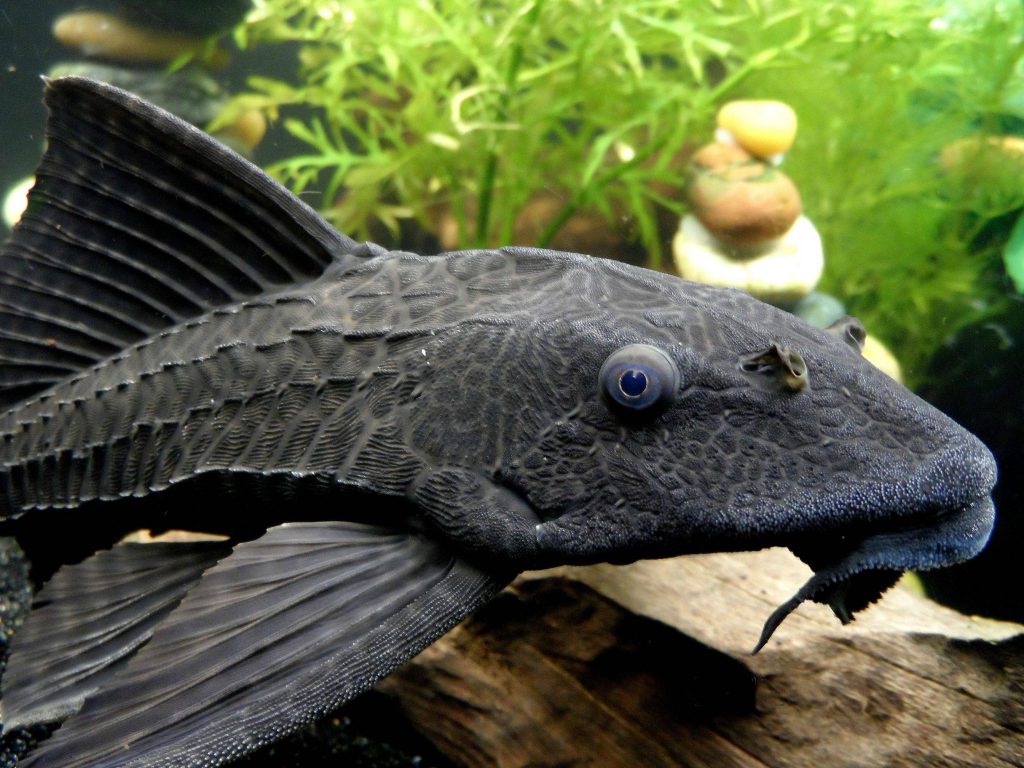
The first thing to know about Plecostomus fish is that it is nocturnal. In daytime it does not show much activity. These prefer staying timid and hidden among plants and other decoration within the tank (Check Out Spongebob Fish Tank Decoration).
These are bottom dwellers and while active, they tend to swim near the bottom of the Tank Cleaning the algae. Whilst moving slowly across the floor they add up a task of cleaning up algae within the tank. Though they do feed on algae their diet should not include only that. Plecostomus are many times mistaken as algae eaters but it should be noted that these are omnivores and need adequate nutrition. Using the sucker mouth, Plecostomus get attached to rocks hence very small rocks should be avoided as these may get engulfed hence damage the fishes.
Features for captive species of Plecostomus
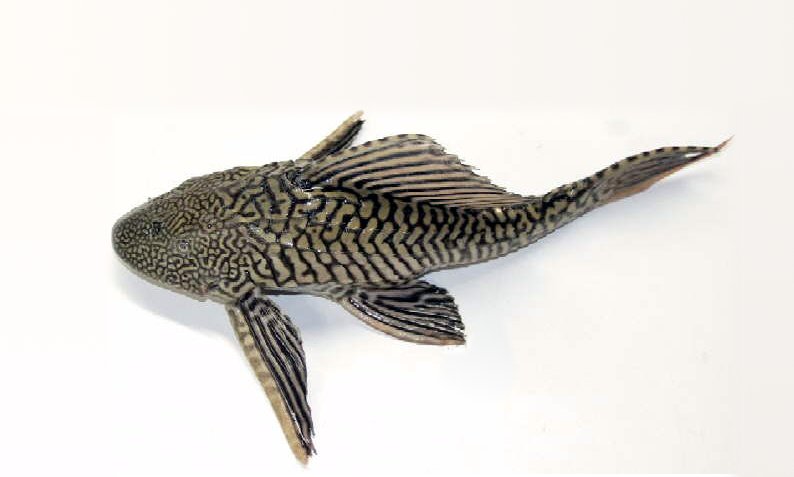
These Plecostomus fishes optimally require soft water with a low pH, but commercial species that usually are bred these days can survive a wide range of pH and varied water chemistry. A pH level of 7 to 8 is sufficient for the species especially the captive bred.
The optimal temperature these fishes require is over 70 degrees and hence aquarium heater should be used periodically for the fishes. Plecostomus require a clean and healthy environment for better growth hence proper cleaning and maintenance of the tanks should be taken care of.
Plecostomus are bottom dwellers and hence they mostly swim near the bottom of the tank.
Plecostomus: Housing Requirements
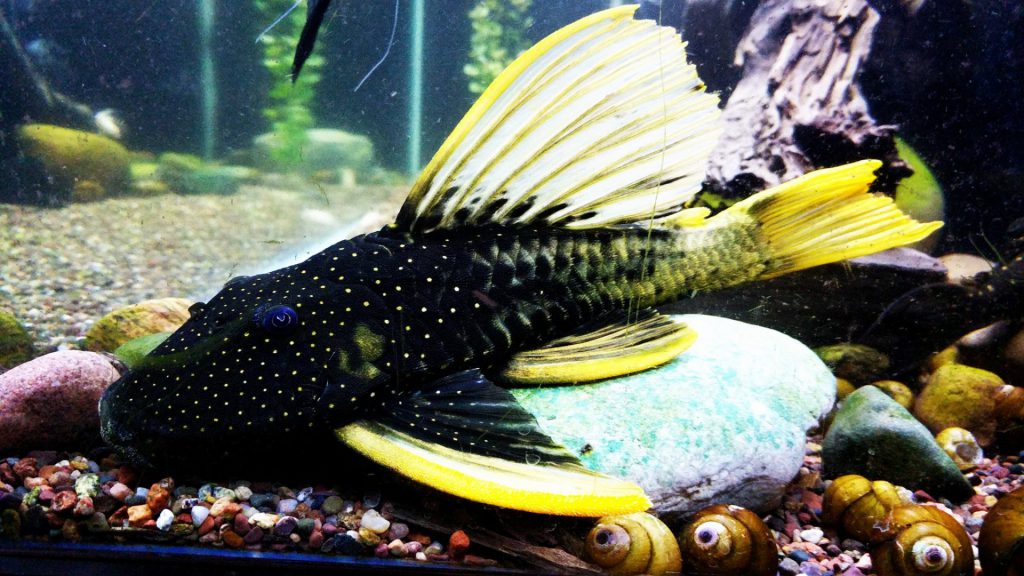
Housing requirements for these Plecostomus fishes usually depend on their sizes. Common species may require from 10 gallons to up to 75 gallons tanks. Plecostomus fishes have the secretive tendency and hence the fish tank should contain artifacts that would provide such shade and places to hide. Most of these species are wild and used to fast flowing streams of water. Hence the adequate amount of circulation should be present in the tank.
Plecostomus fishes also prefer a tank that is heavily planted as they like to stay hidden and also nibble on the plants. They also sleep in these plants during day time hence one should make sure that the tank is heavily planted and has plenty of shaded areas that would allow the fishes to have natural like habitat for dwelling.
Feeding Habits of Plecostomus
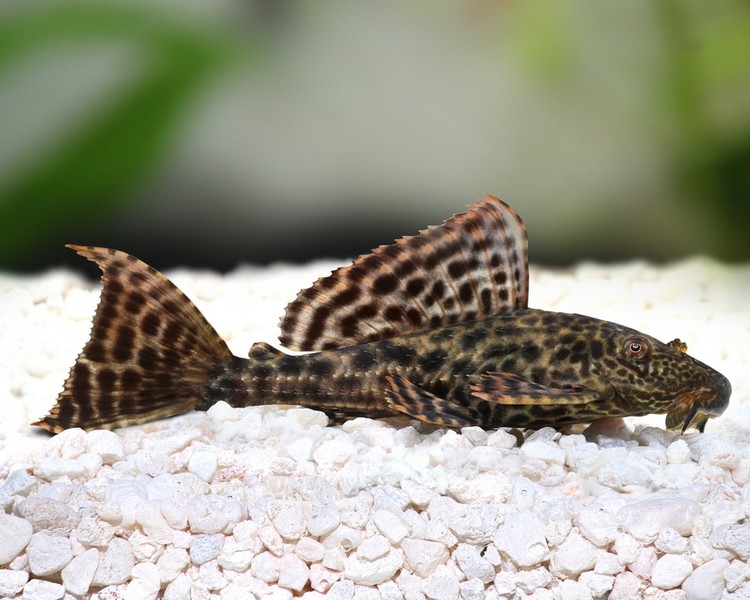
Plecostomus usually feed on algae like other suckermouth fishes, but there have been noted many species that are carnivorous. Others feed almost exclusively on wood, therefore placement of driftwood is suggested.
Various readymade products containing required dietary needs are also available in the market these days. Because of their nocturnal habits, it is best to feed the pleco during night time. It is suggested that the daily diet of the fishes should be rotated for enhanced nutrition and better growth.
One important point to remember is that Plecostomus require lots of fiber containing stuff in their diet. Feeding them a lot of vegetables helps them meet this requirement. Driftwood helps in digestion hence must be included in the diet.
Among live foods they prefer bloodworms, earthworms, crustaceans and larvae. These foods settle down at the bottom hence allows the fishes to feed even in community tanks.
Plecostomus Breeding
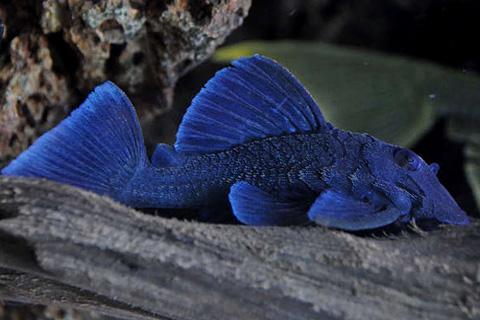
Due to size constraints, even though it is not impossible to breed multiple Plecostomus together, it needs a huge tank which only can be maintained by professional aquariums keepers. Two or more fishes together require about 300 gallon tank which is not compatible for regular usage for household decorative aquariums.
Breeding of Plecostomus in captivity is rather difficult and not a lot of material is available regarding the breeding of this species. Plecostomus are egg layers and usually spawn in caves and flat surfaces. The male guards the eggs till offsprings.
For Further Reading: Check Out Silver Arowana Fish Care Guide.
